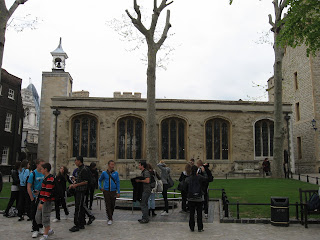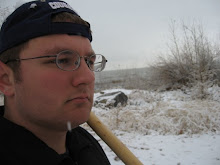Part of my research for my dissertation can only be done in the Institute of Classical Studies in London, at King's College (part of the University of London). The head of the classics department here at the University of Reading got permission for me to use their library for research, although I can't check books out. So, I've taken a trip to do research once each of the last two weeks. My plan was to study and do a little sightseeing as well. Fortunately, the building where the Classical Studies Library is housed, the Senate House, is right across the street from my favorite place in London so far---the British Museum. So every time I go study I take some time to look around. I still haven't seen the whole thing but I'm pretty close now.
The main entrance to the British Museum:

The first time I went to the Classical Studies Library I checked it out first and did some research for a few hours, got my access card, and then headed back to the British Museum.
The Senate House:

Apparently the British Museum really does get its hands on everything from everywhere. They even have a chunk of the Sphinx that was part of the beard.

The doorway to the Egyptian tomb of Tjetji from about 2500 BC:

This two-part wall panel is from Assyria in 860 BC. It shows the god Ninurta on the right panel (not very clearly visible in the picture or in person anymore) and some monster on the left that he is fighting. There's no mention of a monster like this so they don't know what it is.

And here is what the entrance to another ancient Assyrian (castle or something) from around the same time looked like, at least part of it. The two horses with human heads were taken from their place guarding the entrance, and behind them is a replica of the ancient gate.

Something tells me this guy, Pavaya, was important and I think you'll agree (and that something is not historians, they aren't sure). It was taken from an ancient Greek colony from southwest Turkey, and they just know from the writings on it that it's from about 360 BC.

Well, I took a lot of pictures but there are too many to have up here, really. Still, the last I'll show you from the British Museum is an artifact that shows an ancient Roman chariot race with some related trinkets below it. I found this personally very interesting because I wrote my Capstone paper for BYU on chariot racing and how the factions (the Blues, Greens, Reds, and Whites) became political parties.

After researching and then visiting the British Museum, I went to the Tower of London because I hadn't been able to see inside the last time I went. This time, I got there while they were still open but after the guided tours had finished and, knowing I would be back the next week, decided to wait till next time. Some friends recommended the guided tour, and it's the same price whether you do a guided tour or not, and at the end of a guided tour, or before, you can look around all you want anyway. The next week I went to the Tower of London first and took the tour, which was well worth it. Very interesting and a very entertaining guide. The Tower of London is a castle that was first built by William the Conqueror in the 11th century after conquering England and kings and queens added more and more to it over the years, with most of it built in the 13th century. Here's the original castle of William the Conqueror, called the White Tower:

The tour guides are called Yeoman Warders, and their responsibility is to guard the tower and the crown jewels. They are basically just tour guides nowadays, but they are former soldiers. They are required to have served in the military for 22 years with an excellent record. This was our Yeoman Warder tour guide, and behind him is the river entrance known as "Traitor's Gate", because quite often the prisoners of the Tower were brought in by boat through this entrance.

The Tower is famous for its prisoners and its torture. While torture could have gone on anywhere, there was a part of the White Tower that specifically was for torture, and here's what it looks like today:

Yeah, they turned it into a gift shop. Weird.
On the tour we got to go inside the normally-locked church, seen here, where Anne Boleyn's ghost supposedly roams (she's buried there). In front, where all these people are standing, is where the executions took place inside the Tower. Only six ever happened here, though, because the executions almost always took place up on the hill outside of the Tower where the public could see.

This cell is famous because so many famous prisoners were kept here and etched messages into the walls. The messages have been left and are now protected behind the plastic around the room.

This part of the castle is the Bloody Tower:

A catapult in the moat of the Tower:

The base of an old entrance to the Tower:

And a monument to Emperor Trajan outside the Tower that sits in front of the remains of London's original Roman city wall. The top part was added after the Romans, but over half of it is original and has the characteristic layers of red brick mixed in with the regular.

After the tour and looking around some on my own, I went to the British Museum again (this time for a much shorter look) and then headed to the Classical Studies Library again for more research. It made for a couple of pretty good trips, and now I'm planning my trips, including trips to the towns that my ancestors came from.


No comments:
Post a Comment